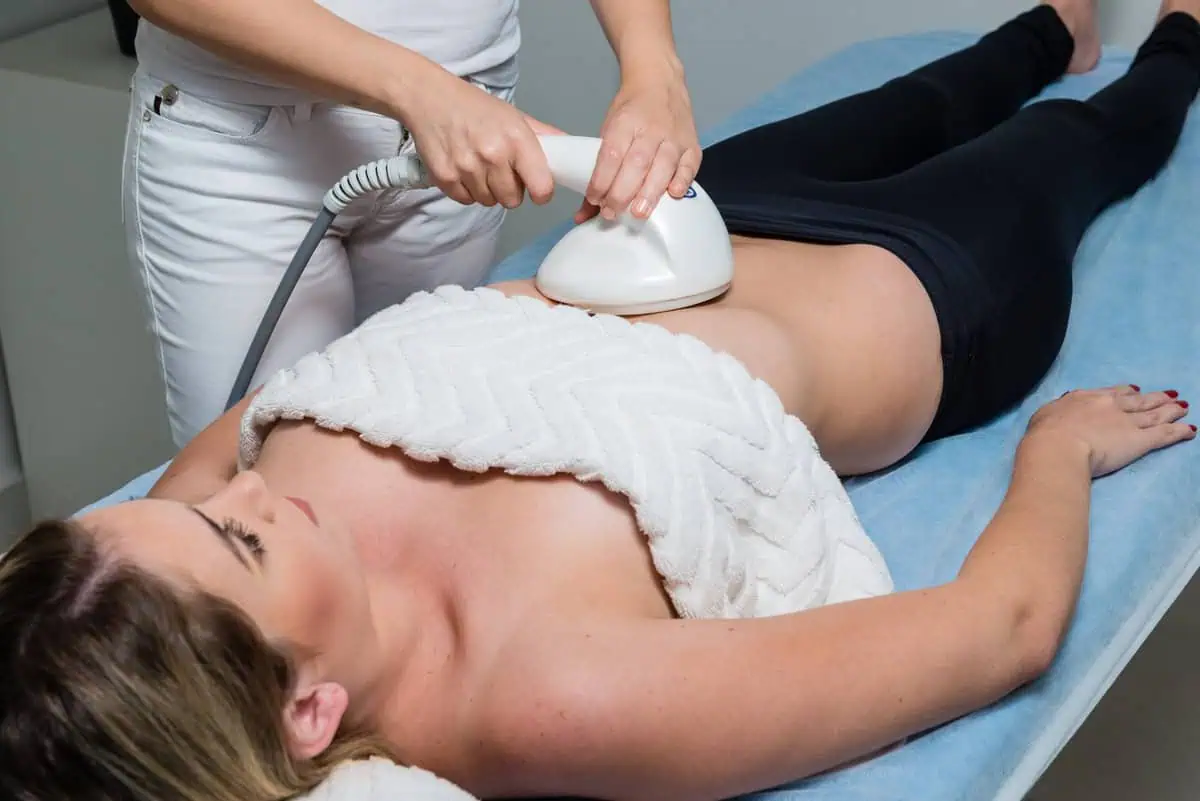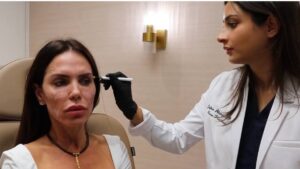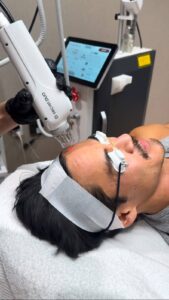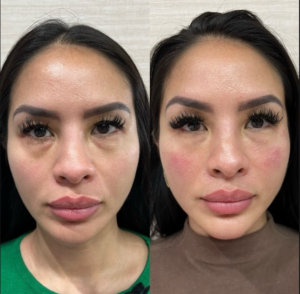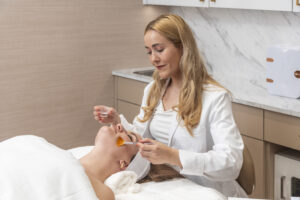For many people, stretch marks are annoying and stubborn skin problems that result from rapid changes in weight, such as during pregnancy, puberty, or significant weight fluctuations. These streaks on the skin occur when the underlying tissue grows faster than the skin, causing the dermis to tear and form scars. While various treatments are available, Carboxy Therapy has emerged as a promising prospect for reducing the appearance of stretch marks. This method uses carbon dioxide injections to improve skin texture and elasticity, offering hope for those looking to diminish these visible lines.
What is Carboxy Therapy?
Carboxy Therapy is a non-surgical aesthetic treatment that injects carbon dioxide (CO2) gas into the skin. This procedure is used for various aesthetic purposes, including reducing stretch marks, cellulite, and localized fat deposits. By introducing CO2 into the affected areas, Carboxy Therapy aims to enhance skin elasticity, improve blood circulation, and stimulate collagen production. Because of its minimally invasive nature and potential to produce noticeable improvements in the skin, this treatment is becoming increasingly in demand.
How It Works
Carboxy Therapy introduces small amounts of carbon dioxide (CO2) gas just beneath the skin’s surface. This process triggers several beneficial physiological responses. An injection of CO2 into the skin dilates blood vessels, enriching blood circulation and oxygenation of the treated area. Enhanced blood flow increases the skin’s metabolism, promoting rejuvenation and healing.
CO2 also stimulates the production of collagen and elastin, vital proteins responsible for skin elasticity and firmness. By increasing collagen and elastin production, stretch marks can be reduced, resulting in smoother, more resilient skin.
Additionally, Carboxy Therapy promotes the breakdown of fat cells in the targeted area, a process known as lipolysis. This helps reduce localized fat deposits, contributing to a more toned and contoured appearance.
Benefits of Carboxy Therapy for Stretch Marks
By leveraging the body’s natural responses to CO2, Carboxy Therapy offers a multifaceted approach to stretch mark treatment.
Enhanced Collagen Production:
Stimulates fibroblasts to produce more collagen, improving skin elasticity and firmness.
Improved Skin Elasticity:
Produces more elastin, which helps the skin stretch and regain its original shape, preventing stretch marks.
Better Blood Circulation:
It dilates blood vessels, enhancing blood flow and oxygen supply to the skin and promoting overall skin health and rejuvenation.
Skin Texture Improvement:
Smooth out the skin’s surface, making stretch marks less noticeable by improving the skin’s texture.
Fat Reduction:
This treatment encourages the breakdown of fat cells in the targeted area, contributing to a more toned and contoured appearance.
Minimal Invasiveness:
Non-surgical and minimally invasive, with fewer risks and shorter recovery time than more invasive procedures.
Versatility:
It can be used on various body parts, including the abdomen, thighs, and arms, making it a versatile treatment option for different areas affected by stretch marks.
How Often Should You Book Your Sessions?
The frequency of Carboxy Therapy sessions can significantly impact the effectiveness of the treatment for stretch marks. The frequency at which these sessions should be scheduled matters a lot for achieving and maintaining your desired results.
- Initial Treatment Phase: Most practitioners recommend starting with one session per week. This frequency allows the skin to gradually adapt to the treatment and for the CO2 to stimulate collagen and elastin production effectively.
- Typical Number of Sessions: A complete treatment course usually involves 6 to 12 sessions, depending on the rigour and scope of the stretch marks. More pronounced stretch marks might require closer to 12 sessions, while fewer severe cases might improve with fewer treatments.
- Maintenance Phase: After the initial treatment successions, maintenance sessions are typically recommended every 4 to 6 weeks. This helps to sustain the results and continue the benefits of enhanced collagen production and improved skin elasticity.
- Factors Influencing Frequency: Individual factors such as skin type, age, and lifestyle can affect how often you need to book your sessions. Consulting with a qualified practitioner can provide a personalized treatment plan adjusted to your unique needs and conditions.
What to Expect During a Session
During a Carboxy Therapy session, the treatment area is first cleansed to ensure a sterile environment. A small needle is then used to inject carbon dioxide gas just beneath the skin. The injection process may cause a mild sensation of pressure or discomfort, but most patients generally well-tolerated it. The CO2 gas quickly diffuses into the surrounding tissues, promoting blood flow and stimulating collagen production.
Each session typically lasts between 15 to 30 minutes, depending on the size and number of areas being treated. After the injections, you might notice some temporary swelling or puffiness in the treated area, which usually subsides within a few hours. Bruising is also a possible side effect, but it tends to be minor and resolves within a few days. There is no significant downtime associated with Carboxy Therapy, allowing you to resume normal activities immediately after the session.
Carboxy Before and Aftercare
Sticking to these aftercare guidelines helps you achieve the best possible results from your Carboxy Therapy sessions while minimizing any discomfort or complications.
Before Treatment
- Medication and Supplements: A few days before the treatment, avoid anti-inflammatory drugs such as aspirin or ibuprofen to reduce the risk of bruising.
- Hydration: Ensure you are well-hydrated, as it can help with treatment.
- Skin Preparation: On the day of the treatment, keep the skin clean and free from lotions, oils, or makeup.
After Treatment
- Immediate Effects: Injection sites may appear swollen, red, or bruised, but this should resolve within a few days.
- Activity Restrictions: Avoid vigorous exercise, hot baths, or saunas for the first 24 hours to minimize swelling and promote healing.
- Cold Compress: If you are experiencing immediate swelling or discomfort, apply a cold compress.
- Skin Care: To aid in healing and prevent hyperpigmentation, keep the treated area moisturized and shielded from the sun with a high-SPF sunscreen.
Takeaway
Are you ready to reduce the appearance of stretch marks and rejuvenate your skin with Carboxy Therapy? At Casa Glow, our experienced professionals are here to help you achieve smoother, more radiant skin. Book your consultation today to learn how Carboxy Therapy can transform your skin. Visit us at Casa Glow and take the first step towards a more confident you!
